I have been waiting over a month to tell you about an impressive program that the Schoolhouse Review Crew leaders introduced to me! I recently scoured the Internet for word problem activities to use with my daughter. Many of the resources I found didn't quite fit the bill. I was looking for something complete, interactive, appealing, and easy to use. Then, our crew leaders shared a resource tool with us called Target the Question which is offered by Lone Star Learning. What great timing! I knew the minute I saw the website and product that I needed this program! It was EXACTLY what I was searching for as a supplement to our core math curriculum which at the time didn't thoroughly cover word problems.
Solving math word problems can be a difficult and grueling task for some children. Problem-solving skills are necessary in life and need to be taught. There are many different problem-solving strategies that can be utilized when finding a solution to a problem. Children must be taught how to collect the appropriate and important information. They must learn how to identify which problem-solving strategy would work best for each situation while realizing that there may be several strategies that could possibly apply. I haven't been spending as much time on problem-solving skills as I wanted to so this product quickly became a NEED for us. Target the Question was an extremely helpful way to address this pressing need.
Lone Star Learning generously gave us a one-year subscription to their first grade Target the Question program. We have been using the first grade Target the Question program for approximately six weeks. Target the Question Digital is an interactive problem-solving program that correlates with the Texas Essential Knowledge and Skills (TEKS) and with the Common Core State Standards (CCSS). It is based on or aligns with the principles and standards of the National Council of Teachers of Mathematics (NCTM) standards. Not to mention, they recently made changes to the program so now it also correlates with the readiness demands of the STARR test that is administered to students living in Texas. This upgrade to the 4th edition makes it even more useful to families in the area that are required to participate in testing regulations. However, make no mistake, this program can definitely be used by individuals in states outside of Texas and can also benefit families that are not tied down to homeschool testing regulations and requirements. Home educators in Texas do not have testing regulations, but I use the standards to see how our curricula compares and we always exceed those expectations. I find this program to be of tremendous help in meeting statewide standards. This outstanding math resource tool is available and suitable for children in 1st through 7th grade. You can purchase the program in either Spanish or English. We used the English version of the program. Please notice that the Spanish option is only available for Grades 1-5. Topics covered include but are not limited to number sense, operations, measurement, algebraic thinking, patterning, geometry, probability and statistics, data analysis, quantitative and spatial reasoning, and mathematical processes and tools.
The program is simple to use. A problem of the week is displayed on the screen as a colorful weekly scenario. There is one problem scenario for each week of school which is based on a 36-week schedule. Each scenario contains five color-coded tabs for each day of the week. Each day of the week is represented by a certain color which makes it easy to organize your day. You can add a color-coded label or folder to your child's workbox or assignments so that it is clear what daily problem they must solve (if working independently). The child can view the answer immediately after solving the problem by clicking on the "View Answer" button.
Monday - Purple
Tuesday - Pink
Wednesday - Green
Thursday - Blue
Friday - Red
The first grade Target the Question Program also includes developmentally appropriate problem-solving learning mats that can be utilized throughout the program. The company recommends using the learning mats during the first semester at the beginning of the program. Three different learning mats are accessible within the digital program. The learning mats are represented by a pictorial icon at the bottom far right side of the screen. The child may work using a part-part-whole mat, comparison mat, or a join-separate mat. The scenario not only changes weekly but the problem-solving strategies implemented vary throughout the weeks of the school year. The questions are different each day. The interface is neatly organized by weekly buttons which make the program extremely user-friendly for both home educators and classroom teachers.
There are several program component tabs at the bottom of the screen.
- Full Screen - You can enlarge the screen size so that the problem fits the entire screen.
- View Answer - This button allows the user to see the answer to the daily question after computations.
- Problem of the Week Menu - This button takes you to the menu displaying each weekly problem.
- Drawing Pad - This is similar to an interactive whiteboard. You can use it to draw pictures or write equations with the drawing tools.
- Drawing Tools - A variety of writing tool colors and a yellow highlighter can be used for annotation purposes. The Eraser erases only part of the problem. However, the spray bottle erases everything (all work and markings shown).
- Main Menu - Brings you to the "Start the Program" screen where you can also download the printables or view the program tutorial.
- Exit - Exits you from the program. Make sure you also log out from the "Dashboard" properly.
- Help Button - Describes the tools above in more detail.
Age or Grade Range
As mentioned before, Target the Question is available for children in first through seventh grade. However, I do believe that you could use the first grade program with advanced kindergartners. Minor adaptations may or may not be necessary. We did not need to make any adaptations to the program. My recently turned five-year-old daughter worked independently with this program after I modeled a few examples from the first week. I was available while she worked independently just in case she had questions. Then, we discussed her solution together once computations were complete. There were times when I showed her alternate solutions or guided her into discovering different ways to find the solution. You can see all grade level samples here. Please visit the website here and try a week. Scroll down to the bottom where purple grade level buttons are displayed. See what you think for yourself. I was hooked at that point! Computer Requirements
Subscription to Target the Question
Computer/Mouse/Keyboard
Adobe Flash Player 10
I used this program on a Mac OSX 10.5.8 using the Safari browser.
*Please click to enlarge the screenshot for a better view of the minimum system requirements.

Problem-Solving Strategies Covered
- Act the Problem Out (Use Objects)
- Draw a Picture
- Make a Diagram
- Work Backwards
- Look for a Pattern
- Solve a Simpler Problem
- Make a Table
- Make an Organized List
- Guess and Check
Skills Learned
- The child learns to focus on and analyze the problem at hand.
- The learner will identify or locate relevant information that is important to the problem.
- They will eliminate unnecessary or extraneous information.
- Critical and logical thinking skills are used to create and follow through with a plan.
- Children will solve problems by choosing and implementing specific problem-solving strategies.
- They will be exposed to and learn multiple problem-solving strategies.
- Summarizing skills can be practiced when answering problems in a complete sentence.
- Children can strengthen their reading skills by reading the scenario and questions independently.
- They learn how to evaluate their work and explain their justifications or reasoning behind an answer.
- Children will develop mathematical vocabulary as they use the program over time.
Online Program Features
*Target the Question Digital Grade Level Subscription
*36 Challenging Weekly Problem Scenarios
*Drawing Pad (Serves as Interactive Whiteboard)
*Drawing Tools (Variety of Colors Available)
*Online Primary Learning Mats (Indicated by Icons)
Printable Features (4th Edition)
A 36-page PDF document is available to individuals with a subscription that contains the following items:
*License Agreement and Warranty
*Introduction to the Program
*Teacher Directions
*Student Copy of Scenarios (In Color, Two Per Page)
*Answer Keys for All Problems
*Correlation Charts for TEKS and CCSS
*Learning Mat Lessons 1-8 (Pages 24-36)
*Problem-Solving Strategy List (Two Page Spread)
*Reproducible Student Think Sheets (Two Page Spread)
How We Used Target the Question
I used this program on a daily basis (Monday through Friday) for at least 10-15 minutes with my five-year-old daughter, Alyssa, who is working mainly at a 1st-2nd level in math. We integrated her math journal time with the Target the Question program in our daily routine. On days when we visited the library or had a play date then we doubled up and completed two days worth of problems. Most days we averaged 30 minutes but only because we extended the lesson by having her record her response and work into her math journal. Adding in a math journal or notebook is not required. We used the Target the Question's student think sheet which is provided in the user materials once you have an active subscription.
Target the Question was used as a supplementation immediately after we completed her math calendar activities and in conjunction with her core math curriculum and online math curriculum. Lone Star Learning recommends that this program be used in conjunction with a concept development math program. Her math curriculum at the time didn't really cover the aspect of problem-solving skills thoroughly enough for my liking which is why I really wanted to try this program. Target the Question met that expectation.
Before beginning this program, I modeled the steps to solving word problems using Target the Question's student think sheet and problem-solving strategy pages. I worked closely with her for the first week and then she began to utilize the program independently. We discussed the problem-solving strategies as they came up in the program. The main strategies utilized so far were "Draw a Picture," "Make a Diagram," "Act Out the Problem (Use Objects)," and "Solve a Simpler Problem." We used a UPS approach when solving weekly problems which stands for Read to Understand and Analyze the Problem, Plan How to Solve Problem, and Solve and Check their Work.
First, Alyssa read the entire problem carefully in order to understand what was being asked. I asked her to restate the question in her own words. Then, she acknowledged the relevant information in the problem. She decided who or what was involved in the problem. Next, she formulated a plan. She chose a problem-solving strategy to use for that particular problem. Then, my daughter solved the problem using the chosen strategy and showed her computations and work on the screen. She crossed out any extraneous information, circled key numbers and wording from the problem using the online drawing tools, boxed the clue math words, and wrote the operation symbol near the clue word. We discussed different problem-solving strategies that could be used with the problem after she showed me her work and attempted to solve the problem independently. My daughter enjoyed figuring out if alternate strategies would work to solve the problem. She also wrote her equation and drew pictures on the draw pad. Alyssa used the learning mats before viewing the answer. The online learning mats were utilized not out of a developmental need but more for fun and to represent the problem visually. Finally, she checked her answer by clicking the "View Answer" button. Alyssa completed most of the problems presented so far using mental math, but I required her to show her work.
Daily Use
Logging Into Target the Question
The first step is logging into the program. Your user name and password are required. Once a subscription is purchased the company will send them to you. I usually logged Alyssa into the program.
Problem of the Week Menu
Once logged in my daughter clicked the "Start Program" button which took her to the "Problem of the Week" menu as seen below. The parent or child can choose and click on one of the weekly numbered buttons. A colorful scenario opens up on the next screen. I started Alyssa at the very beginning of the program starting with Week One. She made it through the first five weeks of the older version before updates were made to the program. Then, we decided to restart the program beginning with Week 1 since the scenario and questions differed once updated. The color of each problem of the week's number button is lightened to a grayish hue once completed. This will help you track where you left off. It isn't very noticeable so my suggestion to the company would be to make the color change more obvious to help the users track their location and progress through the program. This will eliminate the need to search lesson plans to find out what weekly problem was completed last.
NOTE: Please note that the newer, updated version reveals the answer differently. They use pictorial drawings on the learning mats to show the answer. They also tell the child what to do in the actual question. For example one question from the updated program told the child to "Draw a picture. Draw lines from each taco on Plate 1 to a taco on Plate 3." I am not allowed to use screenshots from a different week for copyright reasons so I am unable to show you the recent changes. I do feel that by adding the extra italicized instructions; it makes the question seem wordy and may be harder for the child to read and analyze. The question should stand out more. I can definitely see how the directions could be helpful to any child.
The first step is logging into the program. Your user name and password are required. Once a subscription is purchased the company will send them to you. I usually logged Alyssa into the program.
Once logged in my daughter clicked the "Start Program" button which took her to the "Problem of the Week" menu as seen below. The parent or child can choose and click on one of the weekly numbered buttons. A colorful scenario opens up on the next screen. I started Alyssa at the very beginning of the program starting with Week One. She made it through the first five weeks of the older version before updates were made to the program. Then, we decided to restart the program beginning with Week 1 since the scenario and questions differed once updated. The color of each problem of the week's number button is lightened to a grayish hue once completed. This will help you track where you left off. It isn't very noticeable so my suggestion to the company would be to make the color change more obvious to help the users track their location and progress through the program. This will eliminate the need to search lesson plans to find out what weekly problem was completed last.
Weekly Scenario
I would like to show you what the scenario and questions look like for two days from Week 4 of the older version. The next step was for Alyssa to click on the day of the week button. Monday's question of the day is found in the purple background below "How many birds are in the tree and on the ground in all?" The data is available in pictorial and textual format. You can see my daughter's annotations for the question. She used the writing tools at the bottom of the screen to box the clue words "in all" and circle the words tree and ground. This was a very simple problem so there really isn't a lot of extraneous information. She likes to write the operation symbol near the clue word as a reminder. The program tells the user which learning mat to use for each question. The learning mat icon is indicated and can be seen in the bottom right corner above the three mats. The question for this day requires the child to use the part-part-whole mat which can be seen in the screenshot below. Alyssa used the "+" button to add blue tiles to the left side of the mat representing the number of birds in the tree. She used the "+" button to add green tiles to the right side of the mat representing the number of birds on the ground. My daughter prefers to write the numbers in each box. She then mentally added the two numbers together to get the sum of 10 which is written in the appropriate section of the mat. Children can also count the tiles or birds to find the sum.
In the screenshot below, you can see that she used the drawing pad to write her mathematical equation. For this problem, she drew the birds in her math journal instead of squeezing them into the box. The drawing pad can be resized (enlarged or minimized) if necessary.
Tuesday's question for that same week can be seen in the pink background below. I wish I could show you more but the program changed before I could obtain all of my screenshots for this review. Alyssa boxed the words "How many more than" and wrote the subtraction symbol near the box. She circled the words "tree" and "ground." She had the learning mat and the drawing pad up at the same time for this problem. The indicated learning mat for today is the comparison mat. The comparison mat allows her to compare the two quantities. She added a blue tile for each bird in the tree and a green tile for each bird on the ground. She drew lines matching one bird to the other. She put x's in the blank spots that did not have a match. Then, she circled them all. You can see that she also wrote the equation on the drawing pad making sure to label the answer. She drew the visual representation for the problem in her math journal.
 |
| The "View Answer" button shows the answer statement in pink above. |
Math Journal
As mentioned above Alyssa records her response in her spiral math journal on the student think sheets. We will eventually record them in her math journal without the think sheets once she learns the process. For now, she records the chosen problem-solving strategy, draws and colors the picture, and writes a labeled equation as the answer statement. Then, she cuts out the daily record and glues the think sheet into her math journal. Later in the year, I will require her to write out the answer statement in a complete sentence. She does verbally state the answer in a complete sentence before writing the equation in her journal.
The problem each day was color-coded so I may also emulate the question and create extra problems using the color-coded system for her math journal in the future. Originally, I thought I would have her use a specific colored pencil to match the day of the week in her math journal, however this doesn't help the child if they want to erase what they have written. I wanted to use colored pencils that coordinated with the daily colors for the week, but I needed to give Alyssa more time to get used to the program and steps before proceeding with this idea.
 |
| Friday's Math Journal Entry for Week 4 |
 |
| She used the weekly problem scenario to create and solve her own problem. She asked me to solve it before revealing the answer on paper. |
We made our own learning mats for additional hands-on practice and used them in conjunction with Lone Star Learning's eight printable learning mat lessons. The learning mats were easily recreated using colored construction paper and glue. Alyssa used these mats when she wanted to act out the problem of the day using objects or when creating additional word problems for the scenario. We used popsicle sticks to represent lines, 2 sets of colored counters (two sizes), and printable number cards. Target the Question's learning mats inspired me to make these homemade mats. The mats can also be made available for tactile learners while utilizing the digital program.
 |
| Comparison Mat and Join/Separate Mat |
 |
| Part-Part-Whole |
 |
| Ten Frame and Double Ten Frame |
 |
| Practicing Problems Using Lone Star Learning Lessons 1-8 (Pages 24-36) |
- The colorful scenarios and objects immediately attract and appeal to children and adults alike.
- The scenario can be viewed using the full screen option making the screen size large enough and visible to individuals in the room. A large television or projector can also be used for classrooms or larger rooms.
- I appreciate the fact that the program can be easily integrated into our homeschool day. It is a super quick activity! It'll take maybe 10-15 minutes a day to complete the problem. The program is also organized in a way that makes it easy for any home educator or teacher to implement in their homeschool or classroom.
- The program encourages children to think creatively, use critical thinking skills, and justify answers with reasoning.
- There isn't always one correct way to solve the problem. Children can solve the problem using multiple problem-solving strategies. The program enables the child to attempt and compare alternate strategies to find the same solution. We were able to compare and discuss different problem-solving strategies using up to three different learning mats and the drawing pad simultaneously. The availability of learning mats online is a wonderful way to differentiate learning for young children.
- There is no installation to your computer so you do not have to worry about needing or using up space.
- My daughter is gaining confidence turning questions into complete answer statements. She noticed the pattern used when answering a question. Even though I have her write the equation in her math journal she always verbally announces the answer statement in a complete sentence before viewing it.
- The program is based on and aligned to the National Council of Teachers of Mathematics (NCTM) standards and is correlated to the Texas Essential Knowledge Skills (TEKS) and Common Core State Standards (CCSS). The teacher in me is unfortunately drawn to this aspect. I always check the standards to see where our curricula and Alyssa stands with regards to what she would be learning at a public school. We ALWAYS exceed these standards! I strive to give her more than the state requires but at least I know that she meets the standards if she had to return to a public school system for some odd reason. This is on the pro list mainly because I know that I have readers that teach in the public school system.
- Target the Question can be used by families that have multiple children working at the same grade level. Children in a family will possibly utilize different problem-solving strategies and then you have the opportunity to discuss each strategy as a family just as a teacher would do with her class.
- I was happy to see that the think sheet included a space for children to write and solve their own word problems.
- There really wasn't too much that we didn't like. We ABSOLUTELY without a doubt LOVED this program! It has become a top priority for Alyssa. She looks forward to Saturdays when I allow her the time to create her own word problem using the scenario for the week.
- The cost of the program as a supplemental add on may be too high for some families.
- There needs to be more information available to the user about problem-solving strategies. I happen to be familiar with the concept, however there may be some parents or new teachers that need additional information on how to teach them. I found the problem-solving strategy sheets helpful. I know that this is considered a math supplement for those already using a math curriculum that covers the concept of problem-solving. This improvement would make the program more useful to some homeschool families and educators if additional information were provided.
Digital Program
- My daughter requested that an eraser be added to the drawing pad and learning mats so that everything doesn't have to be erased if she makes one small mistake, because the spray bottle erases everything.
- I would love the option to add another drawing pad. This would enable the child and parent to both work the solution and view the responses side-by-side without having to erase the child's work first.
- We would love to see a few more color options and possibly more symbols (heart, star, circle outlines) added to the drawing pad and learning mats. She specifically asked for the color blue because she wanted the colors to match when writing numbers next to the blue and green tiles. If the color pink was added, then work online could be completed using the corresponding daily color-coded system.
- I would also include a ten frame learning mat as an icon within the digital program. Ten frame mats are used frequently in schools and by home educators in our area (Texas). This would make the program more appealing to teachers or families that use ten frames for math and visualization purposes.
- I hope that Lone Star Learning considers creating a Target the Question program for kindergartners. All students can benefit from this program.
- I noticed that the color of each "Problem of the Week" changes slightly when it is completed. is there any way to make that color change more noticeable for users in order to track their location in the program?
- Users may find the learning mat blackline masters or templates of great help if they were included in the user guide for subscription accounts. Additional lessons would be greatly appreciated. I know that the manual says the eight lessons can be used as guides when utilizing the digital program, but this would give parents additional hands-on practice questions for later use especially if a child struggled with a certain type of problem online.
- I believe it would be easier for younger children to circle the problem-solving strategy symbol at the top of the think sheet instead of writing it out each time. I noticed that the newer version of the manual shows the symbols on the second page but not on the first page. Could they be included on both sheets but as an option next to the word Problem-Solving Strategy?
- Is it possible to add lessons or information about specific problem-solving strategies seen on the list as a review towards the beginning of the PDF document or as part of the digital program?
Overall Thoughts
Target the Question was a huge success with Alyssa and received exceptional ratings from both of us. Alyssa wanted to do several problems each day which tells me that she really enjoyed actively participating and solving the problems. The program was essential in building her confidence in solving word problems using a variety of strategies. I am already seeing results in her math grades related to word problems. I noticed that my daughter is utilizing the problem-solving strategies and methods presented in the program more often in every day situations. We now have the updated version of her core math curriculum which includes more word problems. Target the Question is being used in conjunction with the new curriculum and they work beautifully together. She started boxing key words and circling important numbers and words on her own when a word problem appears in her core curriculum. This complete and effective problem-solving program raises the bar for its competitors. The other day she wrote a word problem for me on a strip of scrap paper during her free time. She asked me to box the clue word and circle the important information before solving it. I had high expectations for this program and your company definitely exceeded them. Target the Question has become a valuable and efficient resource tool in our homeschool. I only wish I had more money in the budget to purchase more of your products. My wish list has grown since being exposed to your company products. I live in Texas and never heard of your company even during my classroom years, but I am glad that I know about it now. I plan to share this resource with individuals in our homeschool community.
Alyssa's Thoughts
Alyssa said, "I like that you could use lines and draw on the mats to figure out the problem. I like ALL the mats. That's what I love the most! The mats help you figure out the problem . . . what the answer is in a quicker way. The pictures were neat and helped me. If the pictures weren't there, then I could read the words." After making the program changes to meet the STARR test she said, "I like the new way that they show the answer. It shows the drawing and tells you how to solve the problem. I also get to do more word problems." My opinion is a little different. I feel that you limit the thinking process by telling the child what to do in the question. I liked the older version of the question format better because the child needed to actually think creatively about how to attack the problem. By adding the additional information to the question of the day, the question became a bit cluttered.
Note: We noticed that the old problems disappeared and she was given brand new word problems starting with Week 1. We only knew this, because I usually have her create her own problem on Saturday . . . but we missed a day. We visited the previous week on Monday and noticed that the entire first grade program had changed. Luckily, I remembered receiving an e-mail from the company that weekend about the upcoming changes so it all made sense at that point. We started the program all over again beginning with Week 1. We school year round so this was an extra bonus for us. We were about to start Week 6 but instead we gained weeks with the upgraded version. How cool is that?
What Does This Program Cost?
A one-year subscription for Target the Question is the price of $59.99. The price range changes depending on the number of years you want a subscription (license terms). The starting price is $59.99 (one year) - $199.00 (five years). Although, I believe most homeschooling families will only use the one-year subscription. The five year subscription would be more beneficial to classrooms. The company also offers Target the Question as a bulletin board component for individuals that prefer a non-digital format. This product costs much more than the digital product. You'll definitely want to check out the demo video below about Target the Question Digital. Please keep in mind they have made a few changes.
Recommended
Most DEFINITELY YES! Go purchase this now if you can afford the expense in your budget! The price seems a little high for a problem-solving supplemental program. I was expecting the price to be in the $30 range for a single homeschool subscription. However, most problem-solving programs on the market are worksheet-based and not as interactive as Target the Question. I will have to seriously consider purchasing the second grade subscription at the end of the year, but it will depend on funds and what other core curricula is needed first. I hope and pray that they consider dropping the price for homeschool families that may be utilizing this program with fewer children.
I recommend this program to everyone! Yep, that's right! Well, that is if you have children working at a Grades 1-7 level. I highly, highly recommend Target the Question for all homeschooling families and classroom educators working at public or private schools. This product is an outstanding way for children to develop problem-solving skills! This program may appeal to all learning modalities. Tactile learners may need manipulatives and learning mats in order to actively participate. I do think that children drawn to computer-based learning may find this program particularly appealing. This program can be used independently, as a whole class or family, as a math computer center activity, as a warm-up activity for the day, in small groups, and during transition times. There is flexibility on how it can be used depending on your homeschool or classroom needs and situation.
Target the Question was a huge success with Alyssa and received exceptional ratings from both of us. Alyssa wanted to do several problems each day which tells me that she really enjoyed actively participating and solving the problems. The program was essential in building her confidence in solving word problems using a variety of strategies. I am already seeing results in her math grades related to word problems. I noticed that my daughter is utilizing the problem-solving strategies and methods presented in the program more often in every day situations. We now have the updated version of her core math curriculum which includes more word problems. Target the Question is being used in conjunction with the new curriculum and they work beautifully together. She started boxing key words and circling important numbers and words on her own when a word problem appears in her core curriculum. This complete and effective problem-solving program raises the bar for its competitors. The other day she wrote a word problem for me on a strip of scrap paper during her free time. She asked me to box the clue word and circle the important information before solving it. I had high expectations for this program and your company definitely exceeded them. Target the Question has become a valuable and efficient resource tool in our homeschool. I only wish I had more money in the budget to purchase more of your products. My wish list has grown since being exposed to your company products. I live in Texas and never heard of your company even during my classroom years, but I am glad that I know about it now. I plan to share this resource with individuals in our homeschool community.
Alyssa's Thoughts
Alyssa said, "I like that you could use lines and draw on the mats to figure out the problem. I like ALL the mats. That's what I love the most! The mats help you figure out the problem . . . what the answer is in a quicker way. The pictures were neat and helped me. If the pictures weren't there, then I could read the words." After making the program changes to meet the STARR test she said, "I like the new way that they show the answer. It shows the drawing and tells you how to solve the problem. I also get to do more word problems." My opinion is a little different. I feel that you limit the thinking process by telling the child what to do in the question. I liked the older version of the question format better because the child needed to actually think creatively about how to attack the problem. By adding the additional information to the question of the day, the question became a bit cluttered.
Note: We noticed that the old problems disappeared and she was given brand new word problems starting with Week 1. We only knew this, because I usually have her create her own problem on Saturday . . . but we missed a day. We visited the previous week on Monday and noticed that the entire first grade program had changed. Luckily, I remembered receiving an e-mail from the company that weekend about the upcoming changes so it all made sense at that point. We started the program all over again beginning with Week 1. We school year round so this was an extra bonus for us. We were about to start Week 6 but instead we gained weeks with the upgraded version. How cool is that?
What Does This Program Cost?
A one-year subscription for Target the Question is the price of $59.99. The price range changes depending on the number of years you want a subscription (license terms). The starting price is $59.99 (one year) - $199.00 (five years). Although, I believe most homeschooling families will only use the one-year subscription. The five year subscription would be more beneficial to classrooms. The company also offers Target the Question as a bulletin board component for individuals that prefer a non-digital format. This product costs much more than the digital product. You'll definitely want to check out the demo video below about Target the Question Digital. Please keep in mind they have made a few changes.
Recommended
Most DEFINITELY YES! Go purchase this now if you can afford the expense in your budget! The price seems a little high for a problem-solving supplemental program. I was expecting the price to be in the $30 range for a single homeschool subscription. However, most problem-solving programs on the market are worksheet-based and not as interactive as Target the Question. I will have to seriously consider purchasing the second grade subscription at the end of the year, but it will depend on funds and what other core curricula is needed first. I hope and pray that they consider dropping the price for homeschool families that may be utilizing this program with fewer children.
I recommend this program to everyone! Yep, that's right! Well, that is if you have children working at a Grades 1-7 level. I highly, highly recommend Target the Question for all homeschooling families and classroom educators working at public or private schools. This product is an outstanding way for children to develop problem-solving skills! This program may appeal to all learning modalities. Tactile learners may need manipulatives and learning mats in order to actively participate. I do think that children drawn to computer-based learning may find this program particularly appealing. This program can be used independently, as a whole class or family, as a math computer center activity, as a warm-up activity for the day, in small groups, and during transition times. There is flexibility on how it can be used depending on your homeschool or classroom needs and situation.
Do you have any questions or concerns about this product? Please visit the general FAQ section at Lone Star Learning for additional information. You can also contact the company with specific questions you would like to ask about the program. They have a few helpful free reproducibles available on their website that you might want to glance at when you get a few moments. We used the ten frame recording sheet quite often during our math activities and games. Be sure to read the interesting and useful conference handouts posted from their presentations. They are chocked full of additional teaching ideas and advice. Make sure you follow their social media pages during your visit.
Additional Store Products
Lone Star Learning offers a wide variety of math, science, and reading products for elementary, intermediate, and middle school grade levels. You can view videos for many of Lone Star Learning products through their You Tube Channel. Here are a several products that you may find of interest:
Target Vocabulary Pictures for Math 2 Sizes, 3 Leveled Sets Plus Primary $29.99
Target Vocabulary Pictures for Science 4 Leveled Sets plus Early Grades K-2 $29.99
Additional Store Products
Lone Star Learning offers a wide variety of math, science, and reading products for elementary, intermediate, and middle school grade levels. You can view videos for many of Lone Star Learning products through their You Tube Channel. Here are a several products that you may find of interest:
Target Reading Digital Grades 1-6, 1-5 year license term price varies starts at $59.99
Primary Problem-Solving Mats Grades 1-4, 25 Mats (Class Set) $29.99
Word of the Day Set 1, Booster Set 1 $39.99
Greek and Latin Roots Vocabulary $39.99Target Vocabulary Pictures for Math 2 Sizes, 3 Leveled Sets Plus Primary $29.99
Target Vocabulary Pictures for Science 4 Leveled Sets plus Early Grades K-2 $29.99
Many thanks to the Schoolhouse Review Crew Leaders and to Lone Star Learning for this unexpected opportunity! This product blessed our homeschool day and supplemented our core math curriculum perfectly.
Please visit the Schoolhouse Review Crew Blog to read other reviews for several different amazing Lone Star Learning products.
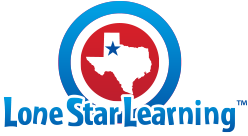








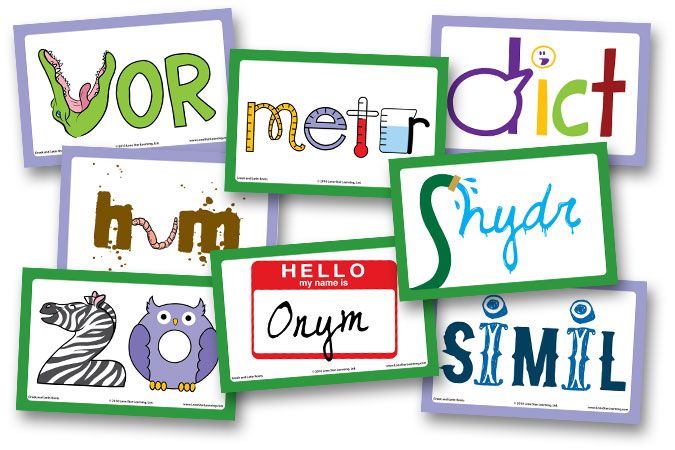





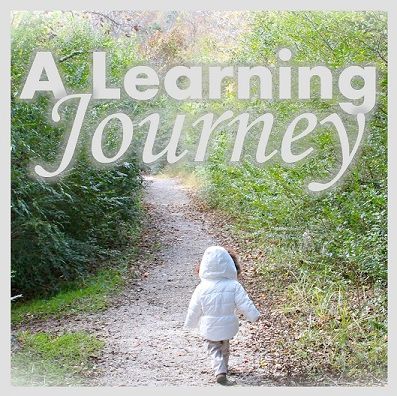






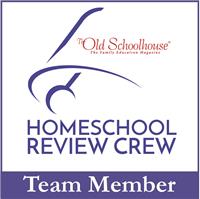






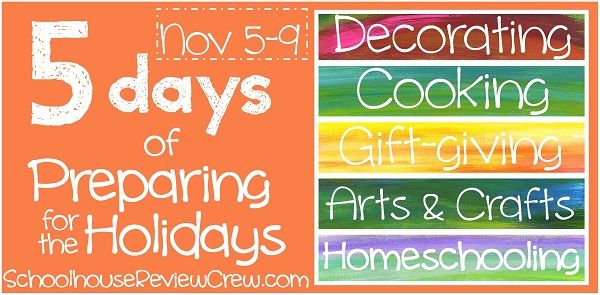
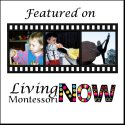


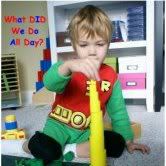



Thank you so much for your review! If a multi-year license is purchased, you are allowed to change the grade level once per year. Happy problem-solving!
ReplyDelete